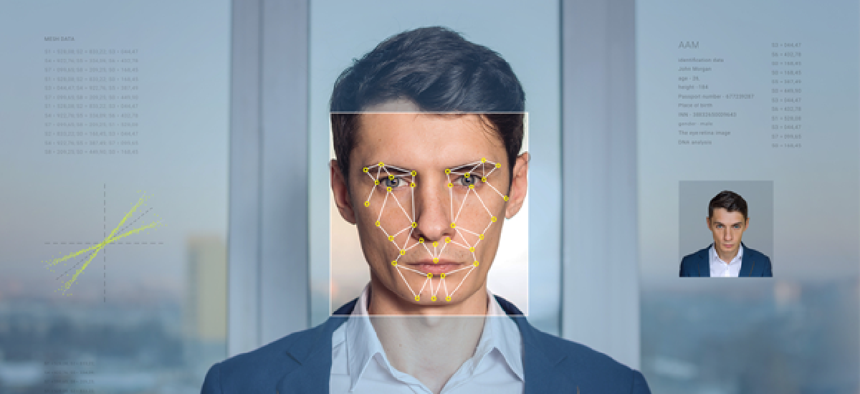CBP's airport facial recognition system nabs first imposter

A new biometric ID entry system that just finished testing has winnowed out its first alleged imposter at Dulles International Airport.

A traveler allegedly posing as a French citizen got the dubious honor of becoming the first imposter discovered by Customs and Border Protection's newly implemented facial recognition system at a Washington, D.C.-region airport.
During a primary customs inspection on Aug. 22 at Dulles International Airport, CBP said in a statement that a 26-year-old man travelling from Brazil showed an agent from the agency's Office of Field Operations a French passport. An image taken by the CBP's facial recognition system at the airport didn't match a passport photo from a comparing database, however, it said.
The agency first deployed the facial recognition system at Dulles last summer after a successful 2016 trial pilot at Hartsfield-Jackson Atlanta International Airport. Dulles is one of 14 "early adopter" airports currently using the system, said the agency.
Privacy impact statements have said participation in the pilot phase of the system was voluntary for international passengers who could otherwise opt for a traditional inspection. CBP said that it has made the system part of its enhanced entry screening process.
In a statement concerning the apprehension of the Congolese passenger, CBP said its officer referred the traveler for a more "comprehensive" secondary inspection, where he became "visibly nervous." During that inspection process, CBP said its inspector found the man's real identity card, from the Republic of Congo, hidden in his shoe.
Using someone else's ID, said CBP, violates immigration law, but the agency said its investigation continues.
The program was first suggested by the 9/11 Commission years ago, and the Department of Homeland Secruity and CBP had been searching for an answer ever since. John Wagner, deputy executive assistant commissioner, in CBP's Office of Field Operations told a May 2017 House Homeland Security panel on visa overstays, that his agency had found a feasible, innovative technical solution for a biometric entry/exit program.
By comparing pictures of passengers taken at the gate with their images in a temporary, compact database, the system broke a longstanding logjam for a biometric entry/exit verification. Before the temporary database solution, the agency was hamstrung by having to tie biometric capabilities to huge primary background databases. CBP has been partnering with airports and airlines to develop and deploy the facial recognition technology in the last year and a half.
In remarks during an Aug. 21 panel on IT transformation at a technology conference in Washington, Wagner said working "up front" collaboratively with key stakeholders such as airlines and airports has been a boon for the agency. The collaboration helped it move ahead more quickly in development and deployment of the system.
The relationship also has spurred airlines and airports to integrate the technology and "avoid creating another CBP-specific process travelers have to stand in line for," Wagner said. That kind of flexibility in allowing industry input on the front-end of development and acquisition, he said, can "make some in government nervous," but it is key for innovation.





